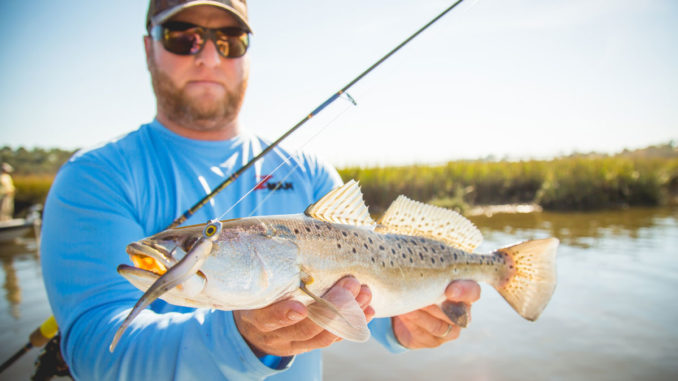
With catch-and-release of trout requested by state officials, how should South Carolina’s inshore anglers respond?
Late this past December, the coastal regions of both Carolinas experienced some of the coldest weather in recent years, with water temperatures plummeting into the low 40s. Then, on Jan. 3, a winter ice and snow storm blasted the coast again, complete with snow and ice.
South Carolina’s Lowcountry was hit the worst, in part because the brunt of the storm was one day after the full moon, when moon-induced low tides had left coastal marshes exceptionally exposed.
The resulting damage included fish kills that affected redfish, sheepshead and flounder, but the weather was exceptionally devastating to speckled trout. The S.C. Department of Natural Resources has been estimating that the cold stun events killed between 50 and 70 percent of the state’s speckled trout. In addition, it’s been estimated that over 90 percent of white shrimp, a critical food source for rearing trout in the marsh, was also lost.
In response, North Carolina closed its recreational and commercial fishery for specks on Jan. 5, to remain closed through June 15. In South Carolina, fisheries managers and lawmakers struggled with the implementation of legislation that would allow for an emergency closure of the fishery but would also make it illegal to attempt to catch speckled trout. Instead of a hard closure, SCDNR has asked anglers to practice catch-and-release of all specks through the end of September.
“Seatrout numbers have been above average in South Carolina in recent years,” said Phil Maier of SCDNR. “We hope that strong starting point, combined with voluntary conservation efforts by anglers, will help the fish recover quickly.”
Spotted seatrout suffered cold-stun kills in 2010-2011, 2009-2010 and 2000-2001. Voluntary catch-and-release was encouraged on each occasion, and full recovery of the fisheries took several years in each case.
To complement these efforts, guides in the Charleston area and some South Carolina-based tackle manufacturers created campaigns to support the voluntary catch-and-release of speckled trout as well as helping SCDNR with replenishing the stocks lost to the cold weather.
As for the fishery itself, guides and anglers remain optimistic that the situation looked worse than it actually was. Guide John Koonce of Shoal Bandit Charters said his time on the water early in the spring gave him reason to be optimistic.
“I believe there are some spots around the Isle of Palms and areas north that were hit hard,” he said. “A lot of these are the same areas that get a lot of fishing pressure, so that makes it much worse for everyone, but we’ve also caught some big trout and smaller trout in the deep water in creeks and in the waterway that protected a lot of trout, so I don’t think all the trout were killed.”
Koonce (843-425-2939) expects to find trout moving back into shallower waters as spring progresses and said they should still be found around oyster points and rips, especially on a low, rising tide.
One of his favorite low-tide patterns is to find trout holding along the tidal rip coming off of a floating dock. As water temperatures reach 70 degrees, typically in late April, these fish will become more and more aggressive.
“By then, we’ll have brown shrimp in the creeks, and those should offset the loss of the white shrimp,” Koonce said. “Plus, there will be finger mullet the trout will be feeding on (and) mud minnows, glass minnows and some small menhaden.”
The loss of white shrimp is of concern to anglers who catch their own bait. Since the majority of bait shrimp are imported from Florida, a lack of bait in bait shops should not be an issue. Koonce always likes to have bait on hand, but he doesn’t always catch his best fish on live bait.
“I will rig some live bait, usually mud minnows or shrimp, and fish them under a cork, but a lot of times I catch better fish throwing artificial baits in the spring,” said Koonce, whose No. 1 artificial is a hard-plastic MirroDine twitch bait, particularly when trout are feeding on small menhaden.
Soft-bait choices include the Z-Man Slim SwimZ fished on their new Nedlockz HD jighead.
“This is a 1/10-ounce head, so it sinks slow when rigged with the Slim Swimz,” Koonce said. “I can throw that on a long point, particularly if it’s one of those that has a big oyster pile on the end of the point and I can fish it real slow back to the boat.”

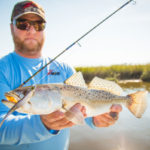
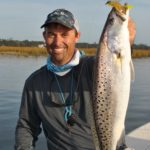
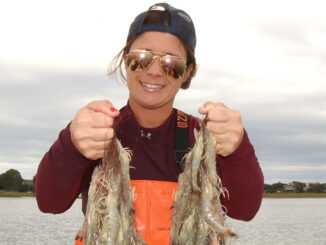
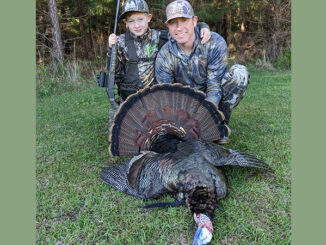
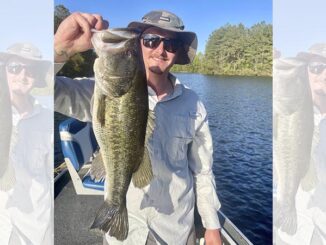

Be the first to comment